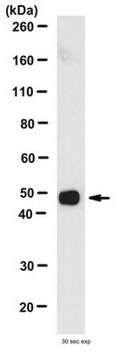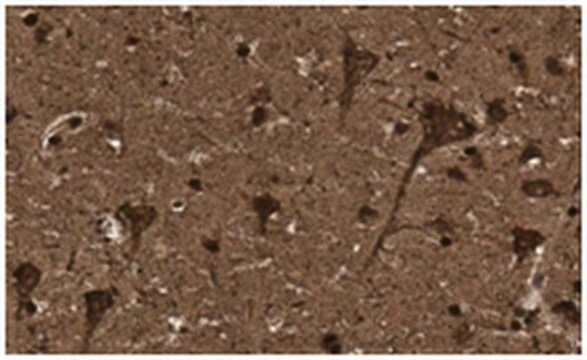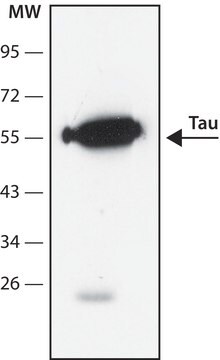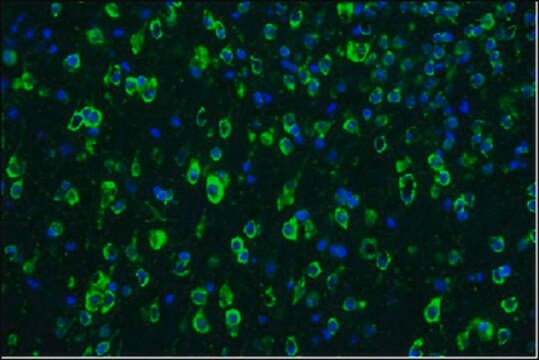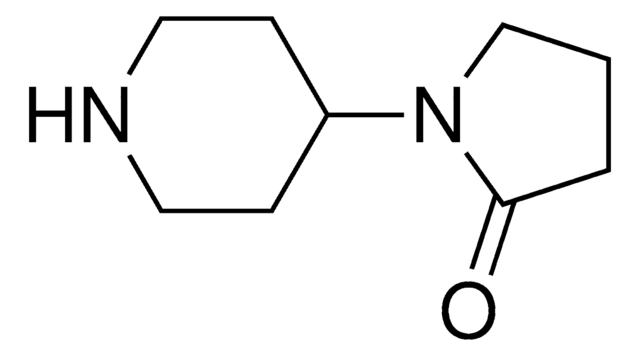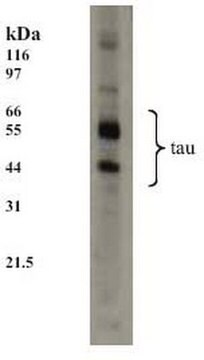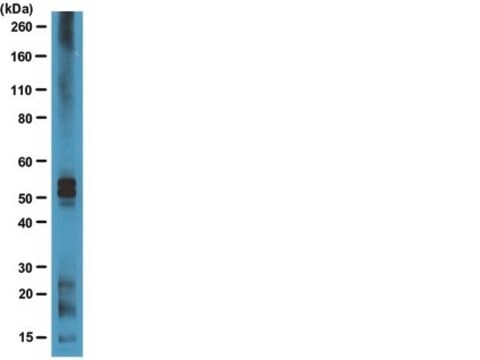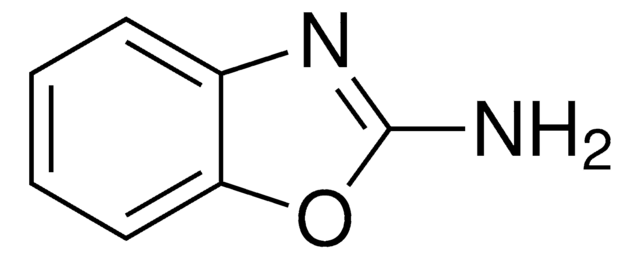MABN2406
ANTI-TAU (MAPT) Antibody
mouse monoclonal, TNT-2
Sinônimo(s):
EC:4.6.1.2, Guanylate cyclase 2D, retinal, Guanylate cyclase E (GC-E), Microtubule-associated protein tau, Neurofibrillary tangle protein, Paired helical filament-tau, PHF-tau, RETGC-1, ROS-GC, Retinal guanylyl cyclase 1, Rod outer segment membrane guanylate cyclase
About This Item
Produtos recomendados
Nome do produto
Anti-Tau Antibody, clone TNT-2, clone TNT-2, from mouse
fonte biológica
mouse
Nível de qualidade
forma do anticorpo
purified immunoglobulin
tipo de produto de anticorpo
primary antibodies
clone
TNT-2, monoclonal
peso molecular
calculated mol wt 120.37 kDa
observed mol wt ~N/A kDa
purificado por
using protein G
reatividade de espécies
rat, human, mouse
embalagem
antibody small pack of 100
técnica(s)
ELISA: suitable
immunofluorescence: suitable
immunohistochemistry: suitable
western blot: suitable
Isotipo
IgG1κ
sequência de epítopo
C-terminal
nº de adesão NCBI
nº de adesão UniProt
Condições de expedição
ambient
temperatura de armazenamento
2-8°C
modificação pós-traducional do alvo
unmodified
Informações sobre genes
human ... MAPT(4137)
mouse ... Mapt(17762)
rat ... Mapt(29477)
Descrição geral
Especificidade
Imunogênio
Aplicação
Evaluated by Immunohistochemistry in mouse retina tissue section
Immunohistochemistry (Paraffin) Analysis (IHC): A 1:50 dilution from a representative lot detected Guanylate cyclase 1 in mouse retina tissue sections.
Tested Applications
Immunofluorescence Analysis: A representative lot detected Guanylate cyclase 1 in Immunofluorescence application (Ying, G., et al. (2018). J Biol Chem. 293(45):17546-17558).
Immunohistochemistry Analysis: A representative lot detected Guanylate cyclase 1 in Immunohistochemistry application (Haire, S.E., et al. (2006). Invest Ophthalmol Vis Sci. 47(9):3745-53).
Western Blotting Analysis: A representative lot detected Guanylate cyclase 1 in Western Blotting application (Haire, S.E., et al. (2006). Invest Ophthalmol Vis Sci. 47(9):3745-53).
Note: Actual optimal working dilutions must be determined by end user as specimens, and experimental conditions may vary with the end user.
Qualidade
Western Blotting Analysis: 0.02 µg/mL of this antibody detected Tau in 10 µg of rat entorhinal cortex lysate.
Descrição-alvo
forma física
Reconstituição
Armazenamento e estabilidade
Outras notas
Exoneração de responsabilidade
Não está encontrando o produto certo?
Experimente o nosso Ferramenta de seleção de produtos.
Código de classe de armazenamento
12 - Non Combustible Liquids
Classe de risco de água (WGK)
WGK 1
Certificados de análise (COA)
Busque Certificados de análise (COA) digitando o Número do Lote do produto. Os números de lote e remessa podem ser encontrados no rótulo de um produto após a palavra “Lot” ou “Batch”.
Já possui este produto?
Encontre a documentação dos produtos que você adquiriu recentemente na biblioteca de documentos.
Nossa equipe de cientistas tem experiência em todas as áreas de pesquisa, incluindo Life Sciences, ciência de materiais, síntese química, cromatografia, química analítica e muitas outras.
Entre em contato com a assistência técnica